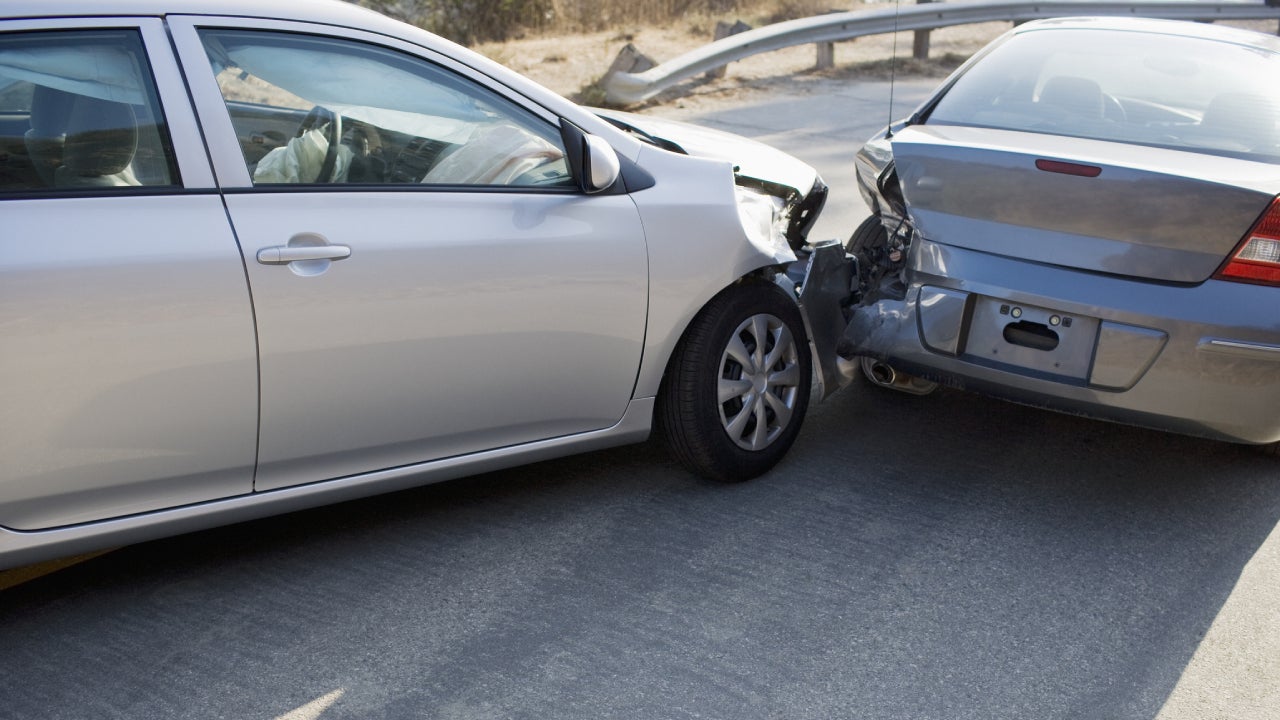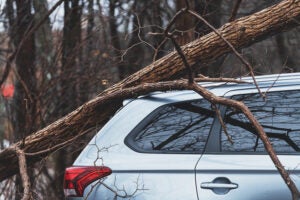What is no-fault coverage and how does it work?

- In a no-fault state, your insurance company initially pays for your medical bills and lost wages after a covered accident, up to your coverage limit, regardless of which driver caused the crash.
- Drivers in no-fault states are required to carry personal injury protection (PIP) coverage in addition to basic liability coverage.
- PIP insurance does not cover damage to your vehicle, another driver’s medical expenses or medical bills above your policy’s limit.
No-fault coverage, also known as personal injury protection (PIP), is a type of car insurance that pays for medical expenses and loss of income for you and your passengers, regardless of who caused the accident. Since each driver uses their own insurance policy to pay for their medical expenses, injured parties can get immediate medical care after an accident without the delay of lawsuits or assignment of fault.
What is no-fault coverage?
As one of the auto insurance industry’s most misunderstood terms, no-fault coverage does not mean no one is at fault for the accident. In the event of a covered accident, the insurance company will still determine fault, and the at-fault driver is still responsible for the injured party’s bodily injury and property damage. However, the initial medical expenses, lost wages and other related costs are paid directly from each driver’s PIP coverage, regardless of who was at fault for the accident.
No-fault coverage was designed to lower the cost of auto insurance by keeping smaller-dollar claims out of the courts. PIP provides coverage for injuries you sustain in a car accident up to the limit of PIP coverage you carry, and pays out right away, reducing the likelihood of one party bringing a lawsuit against the other.
Although there are certain circumstances where you may still sue in a no-fault state (accidents with high-cost serious injuries, for instance), these situations are fairly limited.
Tort refers to a wrongful act that results in harm to people or property. Each state has tort laws outlining when an individual can sue another for wrongdoing. Pure no-fault states limit the right to sue the at-fault driver unless the loss surpasses a certain threshold. All other states either have full tort, where drivers sue for both monetary and non-monetary damage or allow drivers to choose between full tort and limited tort insurance.
States with no-fault coverage
PIP insurance is mandatory in no-fault states, but each state sets its own guidelines regarding coverage limits. For instance, no-fault insurance in Michigan is especially robust. Policyholders have six PIP coverage options to choose from, including unlimited PIP, which means there is no dollar limit to reasonable and necessary medical treatments.
In Florida, the state only requires drivers to carry PIP and property damage coverage, making PIP coverage selection critical since many drivers don’t have to carry bodily injury coverage. Drivers in New Jersey also have various PIP coverage options. NJ PIP allows policyholders to choose coverage for just medical expenses or purchase additional coverage options.
Pure no-fault states
To be considered a true no-fault state, the law must require drivers to carry PIP coverage and have limited tort (restrict the right to sue). There are currently 12 pure no-fault states:
- Florida
- Hawaii
- Kansas
- Kentucky
- Massachusetts
- Michigan
- Minnesota
- New Jersey
- New York
- North Dakota
- Pennsylvania
- Utah
Add-on states
Washington, D.C. and 10 other states are considered “add-on no-fault” states. In these states, PIP coverage may be mandatory or optional, but drivers retain the right to sue:
- Arkansas
- Delaware
- Maryland
- New Hampshire
- Oregon
- South Dakota
- Texas
- Virginia
- Washington
- Washington, D.C.
Choice no-fault states
There are three states that give drivers the option to have no-fault coverage or a traditional policy:
- Kentucky
- New Jersey
- Pennsylvania
The default coverage option in these states requires drivers to have PIP coverage and limited tort coverage. However, in Kentucky, policyholders can sign a coverage rejection form to waive PIP and select full tort coverage. New Jersey and Pennsylvania drivers must carry PIP but can opt for a full tort policy. Selecting full tort will increase the cost of car insurance but gives you more options if another driver severely injures you or your passengers.
What does no-fault insurance cover?
The regulations on what PIP covers vary from state to state, but it typically works the same way. In the event of a covered claim, payments toward medical-related expenses are paid directly from the insurance company to the health care provider. PIP is the first “bucket” that insurance carriers pull from. Once it is exhausted, any overages may be paid by your health insurance or from the at-fault parties’ bodily injury coverage.
These are expenses that will typically be paid by your PIP coverage in a no-fault state:
- Your medical expenses: These may include hospital fees, rehabilitation, dental costs, ambulance services, prescriptions, surgery and prosthetic devices.
- Lost wages: If you lose your job or are unable to work due to your injuries, lost wages may be part of the settlement.
- Funeral expenses: If your accident results in death, insurance may help pay for the costs.
- Essential services: In some cases, PIP may cover the cost of hiring out household tasks such as cooking, cleaning and dog walking services.
What won’t no-fault insurance cover?
Since PIP only covers medical expenses for you and your passengers, various types of claims will be covered by other coverage types on your policy instead of PIP. When filing a car insurance claim, here are a few of the expenses to keep in mind that PIP generally doesn’t cover:
- Injuries to the other driver or their passengers: In most cases, the other driver’s PIP insurance should cover these, at least initially. If your policy does cover these costs, it would be from your bodily injury liability coverage.
- Injuries to pedestrians: If you are a pedestrian and are hit by a car, your PIP will likely cover you. If you are in the car and hit a person who is walking or riding a bike, their PIP coverage or health insurance should cover them in most cases.
- Medical costs over the limit of your coverage: You cannot get more coverage than your policy limits. However, in some states, you may be able to sue the other driver for costs over your coverage if the accident is their fault.
- Damage to your car or any other object: This includes items such as a fence or lamp post. If you have collision insurance, it may cover damage caused to your vehicle by a covered accident. Your property damage liability is what would cover damage that you cause to other vehicles or objects.
Check your insurance policy for more details about inclusions and exceptions.
Frequently asked questions
Why we ask for feedback Your feedback helps us improve our content and services. It takes less than a minute to complete.
Your responses are anonymous and will only be used for improving our website.
You may also like

Car insurance for high-risk drivers in California

What does no-fault state mean?

How is fault determined in a car accident?

What is a comprehensive car insurance claim?


